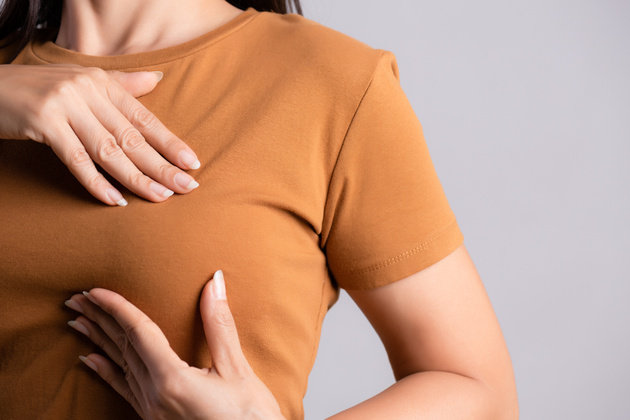How to detect a lump in the breast?
A swelling, swelling, hardness or lump that feels different compared to other parts of the breast or the breast tissue in the same area of the other breast is called a mass in the breast. There are different reasons for breast mass formation. Most masses are not cancerous and do not pose any risk of cancer.

What are the causes of breast masses?
Causes include infection, trauma, fibroadenoma, breast cyst, fat necrosis, or fibrocystic disease. A lump in the breast can be seen in both men and women, but it is much more common in women. Fibroadenoma is a non-cancerous tumor in the breast tissue that commonly develops in women under the age of 30. Breast cysts are non-cancerous masses consisting of fluid-filled vesicles.
The condition of cyst formation in the breast, which occurs with pain and distress during the pre-menstrual period, is known as fibrocystic disease. The disease is characterized by the presence of multiple cysts in the breasts. This disease is seen in 30% of women who have not yet entered menopause. Although the exact cause of the disease is not clear, there are indications that it is caused by excess estrogen levels in the body. Palpable masses in the breast may be benign or may be a sign of breast cancer. For this reason, breast cancer symptoms should be known well and a general surgery clinic should be consulted immediately if a difference is felt in the breast.
What are the symptoms of breast cancer?
- Mass in the right or left breast. Painless, hard masses and swellings that may grow over time
- Changes in the size and shape of the breast
- Bruising, redness, vascular enlargement, depressions on the breast
- Changes in color at and around the nipple, changes in the shape of the nipple
- Discharge or blood from the nipple
- Painful or painless swelling in the armpit
- Hardness in the armpit or breast
How to Identify a Mass in the Breast?
Breast self-examination, doctor’s examination, ultrasonography and mammography are methods that can be used to detect masses. If you want to perform a regular breast examination yourself, you can get information from your doctor on how to do this. Since breast tissue changes may occur during the menstrual period, the examination should be performed a few days after this period.
For breast self-examination, it is checked whether there are masses close to the surface by applying light pressure. For deeper structures you need to apply a little more pressure. If you suspect an unusual structure, you should consult a doctor. Your doctor will investigate the presence of any mass by performing a detailed physical examination and, if necessary, with USG and mammography examinations. If a mass is detected during the examinations, it may be necessary to take a piece of the tissue where the change occurs and perform a biopsy in the pathology department to investigate breast cancer.



